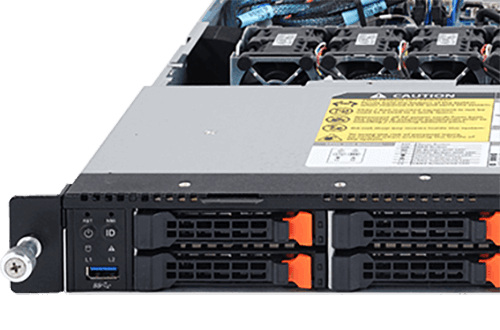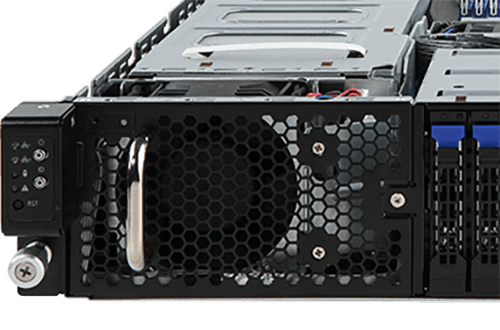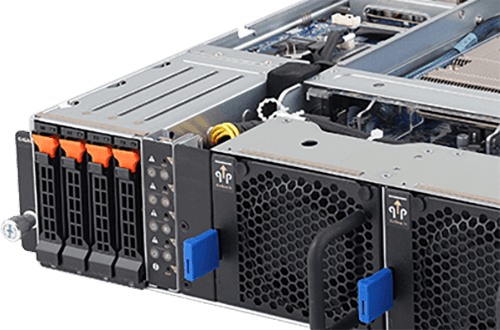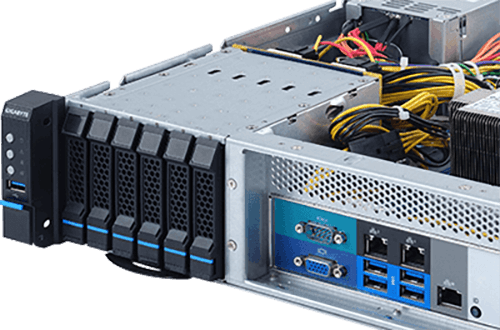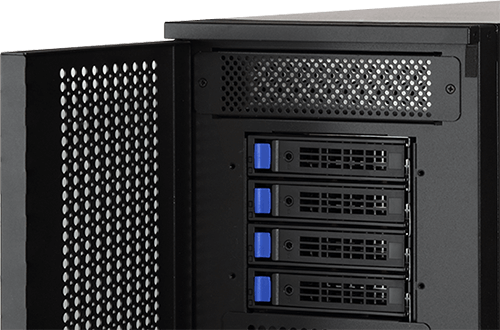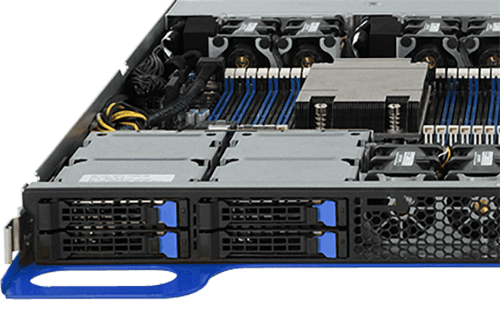AORUS NVMe Gen4 SSD 2TB
สเปคสินค้า
GP-ASM2NE6200TTTD
- InterfaceInterfacePCI-Express 4.0x4, NVMe 1.3
- Form FactorForm FactorM.2 2280
- Total CapacityTotal Capacity2000GB
- NANDNAND3D TLC Toshiba BiCS4
- External DDR CacheExternal DDR CacheDDR4 2GB
- Sequential Read speedSequential Read speedUp to 5000 MB/s
- Sequential Write speedSequential Write speedUp to 4400 MB/s
- Random Read IOPSRandom Read IOPSup to 750k
- Random Write IOPSRandom Write IOPSup to 700k
- DimensionDimension80.5 x 11.25 x 23.5 mm
- Mean time between failure (MTBF)Mean time between failure (MTBF)1.77 million hours
- Power Consumption (Active)Power Consumption (Active)Average: R : 6.5W; W : 6.6W
- Power Consumption (Idle)Power Consumption (Idle)21.1mw
- Temperature (Operating)Temperature (Operating)0°C to 70°C
- Temperature (Storage)Temperature (Storage)-40°C to 85°C
- WarrantyWarranty
- 1. Limited 5-years or 3600TBW.
- 2. Limited warranty based on 5 years or 3600TBW, whichever comes first. (*TBW is evaluated by JEDEC workload standard. )
*TBW (Terabyte Written): Terabytes Written is the total amount of data that can be written into a SSD before it is likely to fail. - 3. When the usage of an NVME SSD as indicated by the "Percentage Used" (SMART ID: 05) in SMART page of "GIGABYTE SSD toolbox" reaches 100 means out of warranty. (A new unused product will show the number of 0)
- NoteNote
- • Test system configuration: configuration may vary by models, we will choose the latest platform for verification.
- • Performance may vary based on SSD's firmware version and system hardware & configuration. Sequential performance measurements based on CrystalDiskMark and IOmeter 1.1.0.
- • Speeds based on internal testing. Actual performance may vary.
- • 1GB = 1 billion bytes. Actual useable capacity may vary.
* ข้อมูลเบื้องต้นมีใว้สำหรับอ้างอิงเท่านั้น GIGABYTE ขอสงวนสิทธิ์ในการปรับเปลี่ยนหรือแก้ไขเนื้อหาได้ตลอดเวลาโดยไม่ต้องแจ้งให้ทราบล่วงหน้า
* ประสิทธิภาพสูงสุดที่ใช้ในการประชาสัมพันธ์เป็นเพียงข้อมูลตามทฤษฎีจากผู้ผลิตชิพเซตที่เกี่ยวข้อง หรือองค์กรที่กำหนดคุณสมบัติอินเตอร์เฟส ประสิทธิภาพที่แท้จริงอาจแตกต่างกันโดยการตั้งค่าของระบบที่ไม่เหมือนกัน
* เครื่องหมายการค้าและโลโก้คุณสมบัติต่างๆ เป็นของผู้ถือสิทธิ์นั้นๆ
* เนื่องจากความต้องการหน่วยความจำมาตรฐานของสถาปัตยกรรมคอมพิวเตอร์ต่อหน่วยที่ไม่เหมือนกัน ดังนั้นขนาดหน่วยความจำที่จำเป็นอาจน้อยกว่าจำนวนที่ระบุไว้ก็ได้
* ประสิทธิภาพสูงสุดที่ใช้ในการประชาสัมพันธ์เป็นเพียงข้อมูลตามทฤษฎีจากผู้ผลิตชิพเซตที่เกี่ยวข้อง หรือองค์กรที่กำหนดคุณสมบัติอินเตอร์เฟส ประสิทธิภาพที่แท้จริงอาจแตกต่างกันโดยการตั้งค่าของระบบที่ไม่เหมือนกัน
* เครื่องหมายการค้าและโลโก้คุณสมบัติต่างๆ เป็นของผู้ถือสิทธิ์นั้นๆ
* เนื่องจากความต้องการหน่วยความจำมาตรฐานของสถาปัตยกรรมคอมพิวเตอร์ต่อหน่วยที่ไม่เหมือนกัน ดังนั้นขนาดหน่วยความจำที่จำเป็นอาจน้อยกว่าจำนวนที่ระบุไว้ก็ได้







